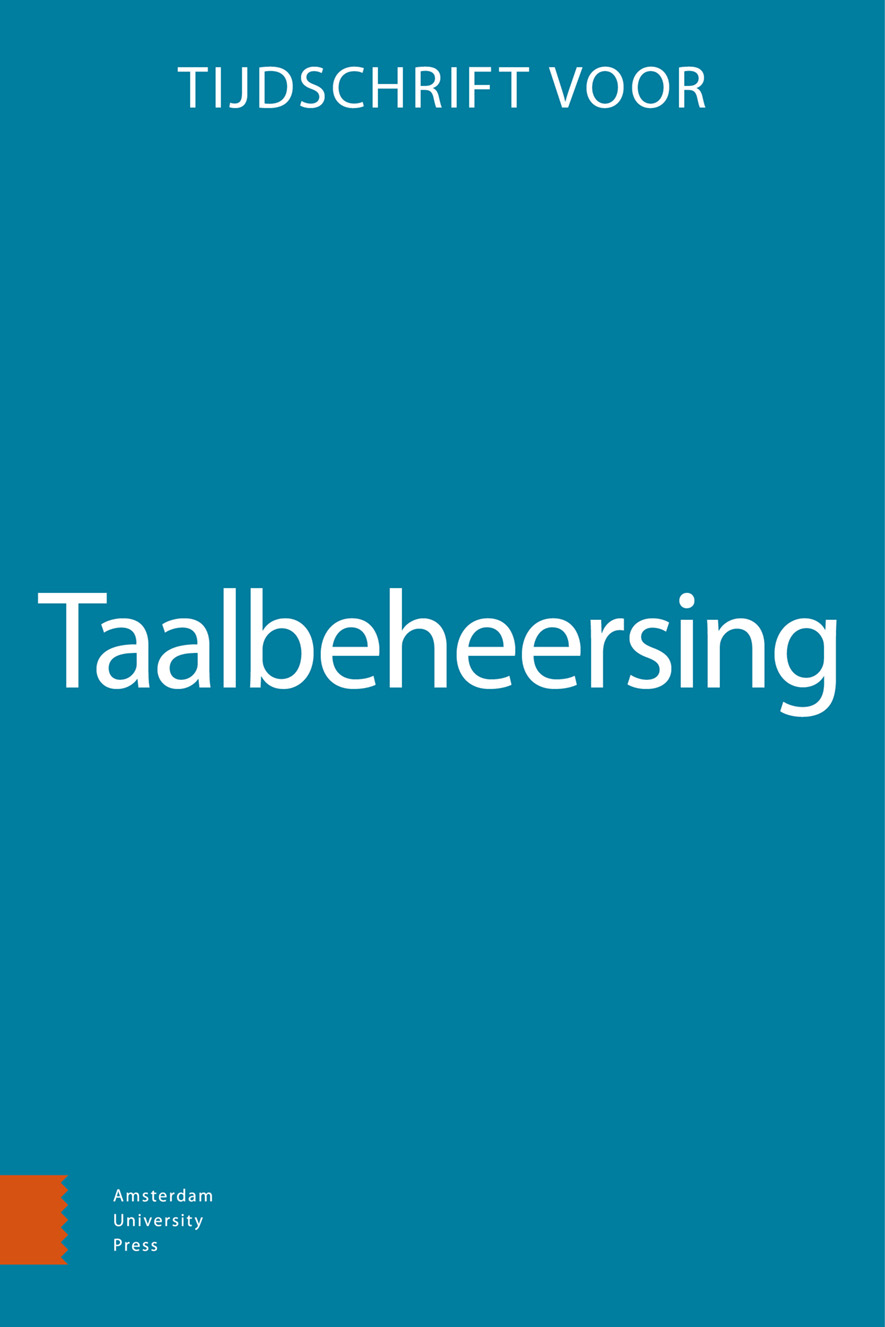- Home
- A-Z Publicaties
- Tijdschrift voor Taalbeheersing
- Previous Issues
- Volume 40, Issue 3, 2018
Tijdschrift voor Taalbeheersing - Volume 40, Issue 3, 2018
Volume 40, Issue 3, 2018
-
-
De vertaler als schrijver
Meer MinderAuteurs: Iris Schrijver, Leona Van Vaerenbergh, Mariëlle Leijten & Luuk Van WaesAbstractThe translator as a writer: Text production competence as a component of translation competence
Most translation scholars and practitioners believe that translators should be able to write. What this writing competence for translators entails and how it differs from the competence of writers remains undiscussed. In this article we compare the relevant literature from translation studies and writing research. Translation competence models do not mention writing competence but refer (implicitly) to text-productive competence. This term emphasizes that the text-production that takes place during the translation process may be more or less source text-oriented and therefore may resemble to a greater or lesser extent other forms of text production. The translator’s text-productive competence seems to be restricted to communicative competence in the target language, building on declarative but predominantly procedural lexical, grammatical, pragmatic and textual knowledge. This communicative competence in the TL cannot be viewed in isolation of the ability to control interference from the source text and source language. The translator’s text-productive competence also appears to build on strategic knowledge. A comparison between the competences of writers and of translators shows that they indeed share many identical knowledge types, skills, abilities and attitudes. Although a number of writing subcompetences bear great resemblance with translation subcompetences, closer examination reveals divergence in their scope, their purpose and organisation.
-
-
-
Informatie vragen over alcohol of drugs
Meer MinderDoor Wyke StommelAbstractAsking for information about alcohol or drugs: a conversation analysis of calls to a Dutch information service
In this article I present a conversation analysis of openings of calls between callers and call-takers from a Dutch information helpline. In openings of institutional interactions, the participants present their situational identities, for example information provider and information seeker. In rare cases, the articulated identities do not fit together and the speakers’ turns are directed towards different interactional activities (projects). This has also been called interactional asynchronicity. The openings of the Dutch alcohol and drugs information service are characterized by project shifts and problems of alignment related to the caller’s question. These appear to be related to the difference between asking for general information versus information that is of personal relevance. Callers sometimes align with the call takers’ self-categorisation with “alcohol/drugs info line” with a question for general information. However, they frequently shift to a question with personal relevance for instance by using self-repair. When callers do ask for general information, call takers sometimes do not directly answer the question, but look for a personal motivation for the question from the caller. In case they don’t, this may lead to interactional asynchronicity. Information provision as the primary focus of the helpline does not seem to optimally support the service.
-
-
-
Naar een betere dagvaarding
Meer MinderAuteurs: Tialda Sikkema, Leo Lentz & Henk Pander MaatAbstractImproving the court summons. Effects of stylistic and structural revisions on summons comprehensions for readers of different literacy levels
The traditional Dutch court summons does not help readers to understand the information it’s lawfully supposed to communicate. Especially lower literate and lower educated readers cannot deal with this document properly. In this study we compare reading success in four versions of a court summons. The content in all four is the same. The first, classic summons is normally being used throughout the legal professions involved in serving writs. In the second version the structure is manipulated by inserting headings and an altered order of both sentences and topics. In the third version only words and sentences have been manipulated, the structure however remained identical as in the classic summons. In the fourth version both manipulations are combined. The results indicate that when both style and structure are revised, readers with lower literacy and a lower educational level are no longer disadvantaged and show equal reading success. A reversed Matthew effect occurs in this revision. Therefore the authors suggest the new court summons should be revised on both structure and style.
-
Most Read This Month

Most Cited Most Cited RSS feed
-
-
Fatale spelfouten?
Auteurs: Frank Jansen & Daniël Janssen
-
- More Less

